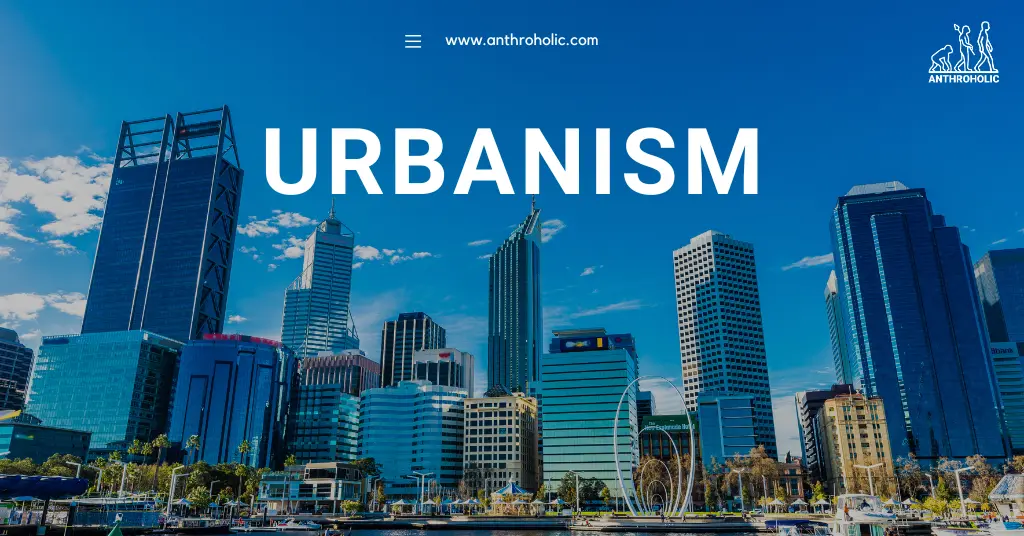AI Answer Evaluation Platform Live Now. Try Free Answer Evaluation Now
Urbanism
Urbanism is a broad term that refers to the dynamic interplay of socio-cultural, economic, political, and physical aspects that define urban life. By investigating urbanism, we can understand how urban environments influence behavior, interact with social dynamics, and shape economies, while also examining how the evolution of technology and policy influences urbanism.

The Concept of Urbanism
- Urbanism explores how cities are designed and organized, examining how the diverse mix of inhabitants interact with their environment, and how these interactions shape the city itself.
- From architectural designs to transportation systems, urban planning, public spaces, and neighborhood structures, urbanism encompasses various domains that together make up the urban experience.
- Urbanism studies not only the physical characteristics of cities but also the social, cultural, and economic processes that take place within these settings.
The Importance of Urbanism
- Sustainable development: With more than half of the world’s population currently living in urban areas, a number that is set to rise in the coming years, sustainable urban development is more critical than ever. Urbanism provides the tools and frameworks to create cities that are socially inclusive, economically viable, and environmentally friendly.
- Socio-economic impact: Urbanism addresses issues like poverty, inequality, and segregation, helping to create cities that offer opportunities to all residents, regardless of their socio-economic status.
- Promoting health and well-being: Good urbanism promotes public health by creating safe, walkable neighborhoods, providing access to green spaces, and reducing pollution.
- Cultural vitality: Urbanism recognizes the importance of cultural vitality and creativity in urban life, fostering vibrant, diverse, and innovative cities.
The Principles of Urbanism
- Human-scale design: This principle emphasizes designing cities that prioritize people over cars, creating walkable, bike-friendly neighborhoods that promote social interaction and physical activity.
- Mixed-use development: Urbanism promotes the integration of residential, commercial, and public spaces in close proximity, which creates vibrant, versatile neighborhoods that are active throughout the day.
- Diversity and inclusivity: Urbanism values the diversity of people, cultures, and ideas, striving to create inclusive cities that cater to the needs of all residents.
- Sustainability: This principle involves designing cities that minimize environmental impact, promote energy efficiency, and foster resilience to climate change.
- Public participation: Urbanism emphasizes the involvement of residents in decision-making processes, allowing them to shape their own urban environments.
The Role of Urbanism in the 21st Century
- Adapting to climate change: Urbanism can guide cities in becoming resilient to extreme weather events and mitigating their environmental impact. This involves everything from creating green infrastructure, such as parks that absorb stormwater runoff, to designing buildings that consume less energy.
- Reducing inequalities: Urbanism has a significant role in addressing social, economic, and spatial inequalities in cities. By advocating for affordable housing, accessible public transportation, and inclusive public spaces, urbanism can help create cities that work for everyone.
- Promoting health and well-being: Modern urbanism recognizes the city’s role as a determinant of public health. Healthy urban design involves reducing air pollution, promoting physical activity through walkable neighborhoods, and providing access to nature and green spaces.
- Harnessing technology: Urbanism can guide how cities integrate new technologies. Whether it’s using data to improve urban services, developing smart grids to manage energy use, or designing urban spaces that accommodate autonomous vehicles, urbanism is key to managing the disruptive impact of technological innovations.
- Fostering community and cultural vitality: Through urban design, urbanism can contribute to creating vibrant communities and fostering cultural vitality. This involves designing public spaces that facilitate social interaction, recognizing the role of arts and culture in urban life, and ensuring that urban change respects and enhances the city’s cultural heritage.
The Different Forms of Urbanism
- New Urbanism: An urban design movement that promotes environmentally friendly habits by creating walkable neighborhoods with a wide range of housing and job types.
- Tactical Urbanism: A city, organizational, and/or citizen-led approach to neighborhood building using short-term, low-cost, and scalable interventions to catalyze long-term change.
- Landscape Urbanism: This form of urbanism argues that the best way to organize cities is through the design of the city’s landscape, rather than the design of its buildings.
- Post Urbanism: This theory posits that traditional cities are being replaced by sprawling, decentralized “urban fields” due to changes in technology, economics, and culture.
- Everyday Urbanism: This perspective on urbanism looks at how ordinary people shape urban spaces through their daily activities, rather than how professionals design them.
Challenges and the Future of Urbanism
- Rapid urbanization: The rapid growth of cities, especially in developing countries, is a significant challenge. This rapid growth often leads to the development of informal settlements, inadequate infrastructure, and increased socio-economic inequalities.
- Climate change: Urban areas are significant contributors to global greenhouse gas emissions and are also vulnerable to the impacts of climate change. Addressing these issues is a crucial task for urbanism.
- Technological changes: The rise of digital technologies, artificial intelligence, and other technological innovations are transforming urban life. Urbanism needs to understand and manage these changes to ensure that they benefit all city dwellers.
- Public health crises: As evidenced by the COVID-19 pandemic, cities can be hotspots for the spread of infectious diseases. Urbanism plays a crucial role in designing cities that can effectively manage and respond to such crises.
Urbanism, with its multidisciplinary approach, is instrumental in shaping the future of our cities. By addressing these challenges and harnessing opportunities, urbanism has the potential to create cities that are not only economically vibrant and environmentally sustainable, but also socially inclusive, healthy, and culturally rich. It is through understanding and applying the principles of urbanism that we can truly unlock the potential of urban life.




